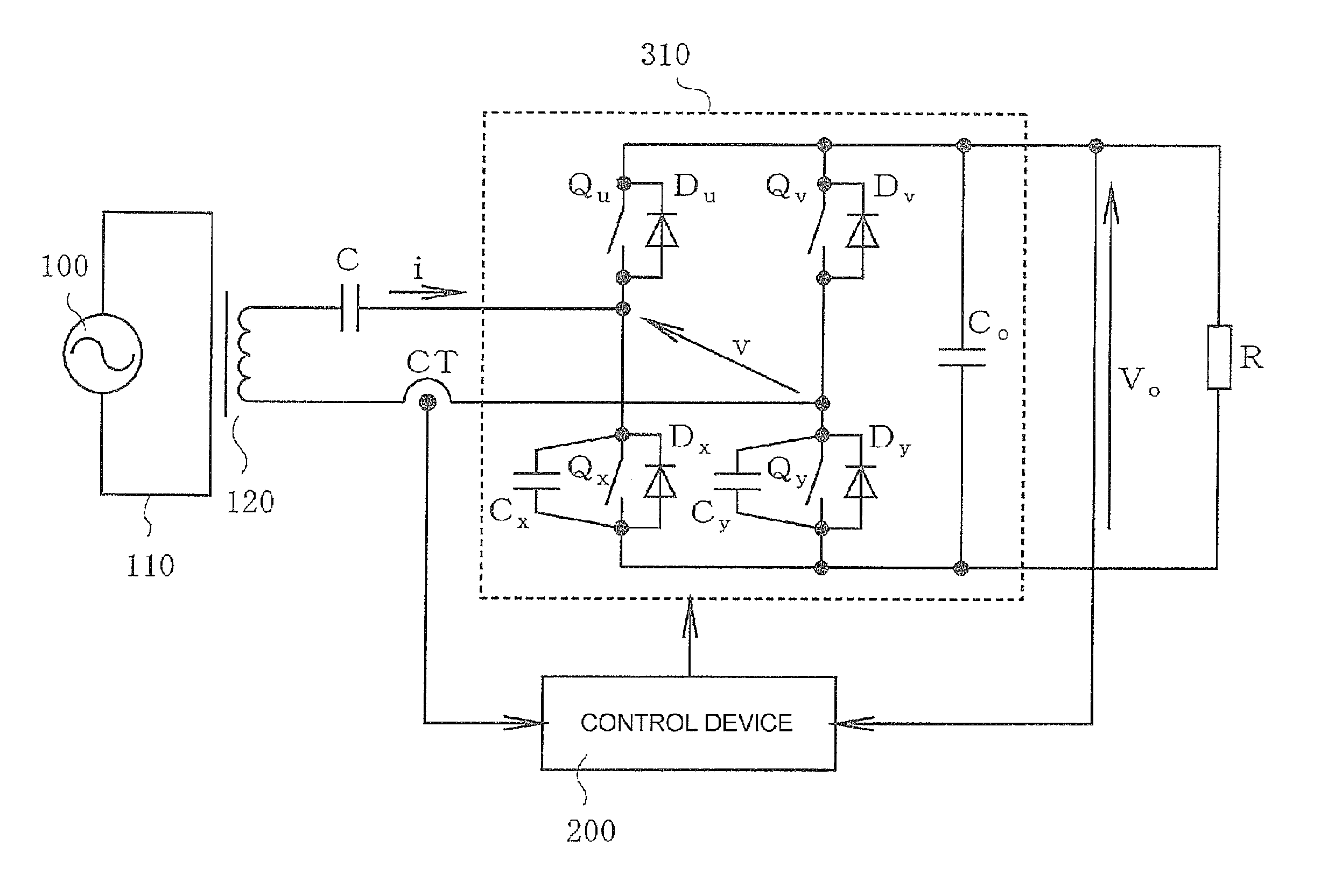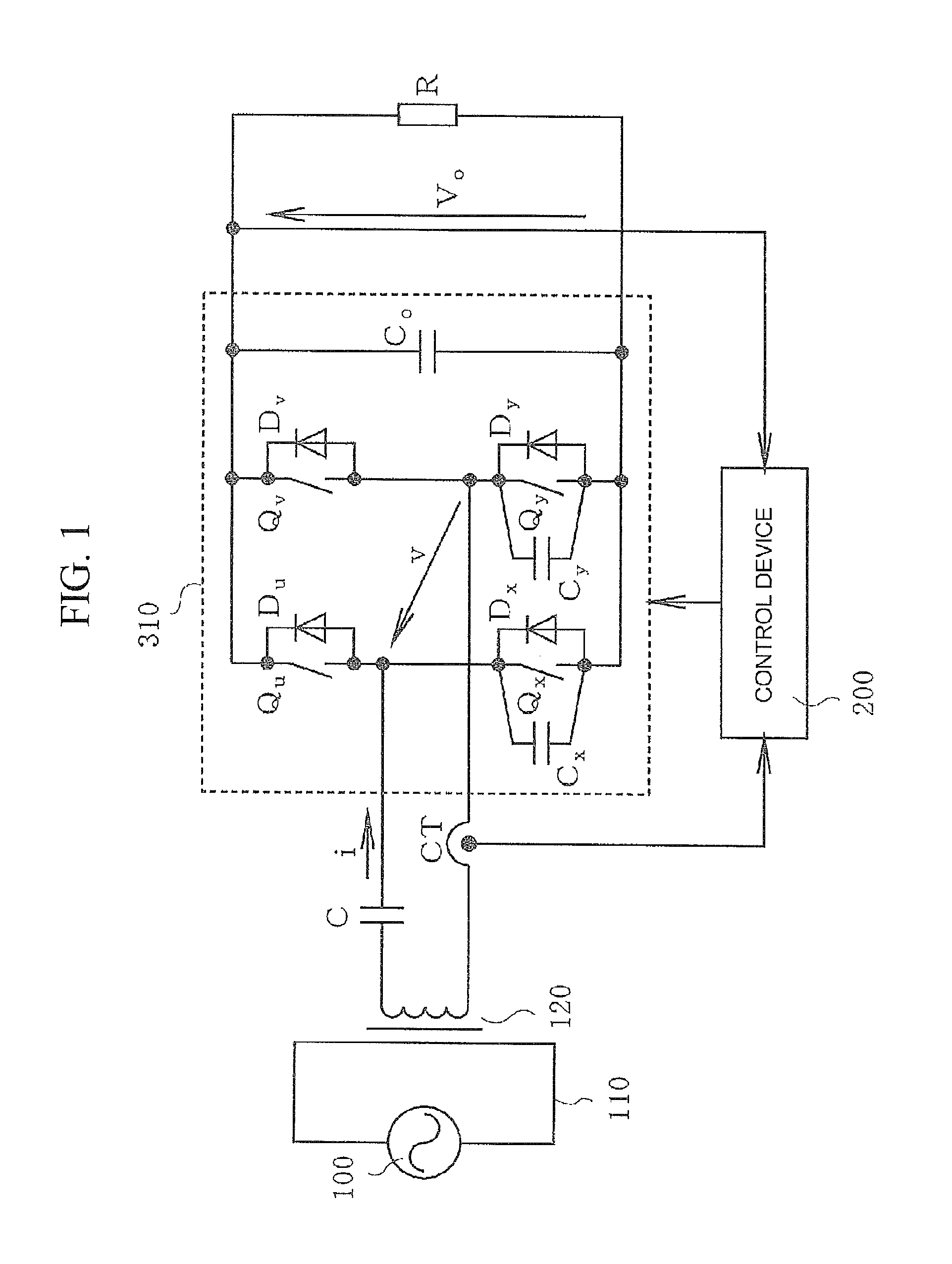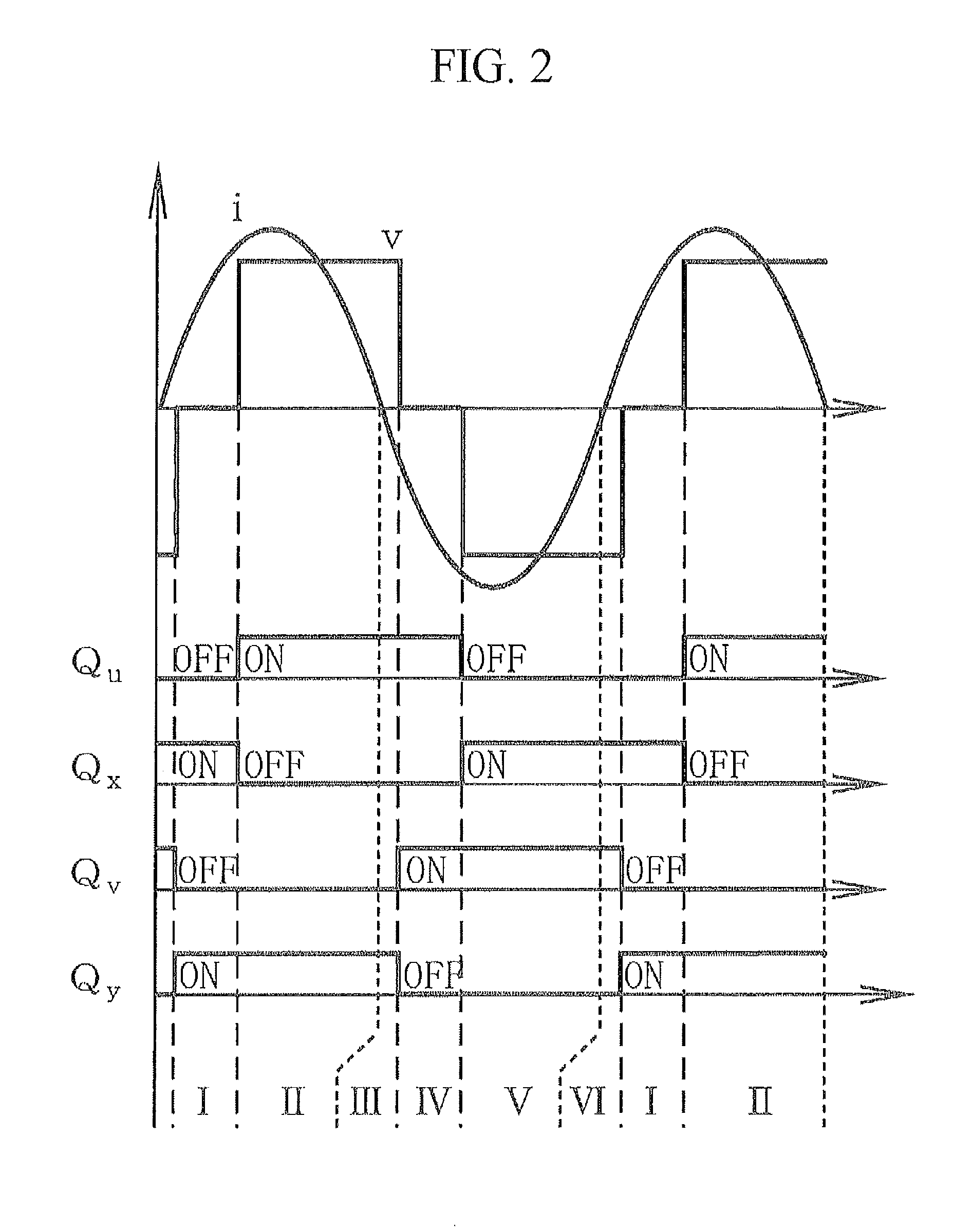Contactless power transfer system and control method thereof
a power transfer system and control method technology, applied in power conversion systems, ac-dc conversion without reversal, electrical apparatus, etc., can solve the problems of increasing power transfer efficiency, increasing increasing the loss of semiconductor switch, etc., to reduce the number of circuit components, reduce the cost of circuit configuration, and reduce the effect of loss
- Summary
- Abstract
- Description
- Claims
- Application Information
AI Technical Summary
Benefits of technology
Problems solved by technology
Method used
Image
Examples
first embodiment
[0063]FIG. 1 is a circuit diagram showing a contactless power transfer system according to the invention, and corresponds to a first aspect of the invention.
[0064]In FIG. 1, reference numeral 310 is a power receiving circuit. The power receiving circuit 310 includes bridge connected semiconductor switches Qu, Qx, Qv, and Qy, diodes Du, Dx, Dv, and Dy connected in reverse parallel to the switches Qu, Qx, Qv, and Qy respectively, capacitors Cx and Cy connected in parallel to the lower arm switches Qx and Qy respectively, and a smoothing capacitor C0 connected between direct current terminals of a bridge circuit (bridge inverter) formed from these elements. A series circuit of a resonant capacitor C and the power receiving coil 120 is connected between alternating current terminals of the bridge circuit, and a load R is connected to either end of the smoothing capacitor C0.
[0065]Also, reference numeral 200 is a control device that generates a drive signal for switching the semiconducto...
second embodiment
[0102]FIG. 8 is an operation illustration showing the control method according to the invention and, in the same way as FIG. 7, shows an operation waveform of the current i and voltage v, and drive signals of the semiconductor switches Qu, Qx, Qv, and Qy, from a stoppage to a restart of the power transfer from the primary side feeder wire 110.
[0103]When the power transfer is stopped from a normal power transfer condition at a timing (a) of FIG. 8, a loss of the current i is detected by the current detection unit CT in FIG. 1, and the individual semiconductor switches Qu, Qx, Qv, and Qy are controlled into “Qu: off, Qx: on, Qv: off, and Qy: on” conditions.
[0104]This on / off control corresponds to period I shown in FIG. 2, wherein only the lower arm side semiconductor switches Qx and Qy are put into an on condition.
[0105]Next, on the power transfer being restarted at a timing (b) of FIG. 8, a voltage in accordance with a high frequency current of the primary side feeder wire 110 is ind...
third embodiment
[0108]Next, FIG. 9 is an operation illustration showing the control method according to the invention and, in the same way as FIGS. 7 and 8, shows an operation waveform of the current i and voltage v, and drive signals of the semiconductor switches Qu, Qx, Qv, and Qy, from a stoppage to a restart of the power transfer from the primary side feeder wire 110.
[0109]In the embodiment, when the power transfer is stopped from a normal power transfer condition at a timing (a) of FIG. 9, a loss of the current i of the power receiving coil 120 is detected by the current detection unit CT, and the condition of each semiconductor switch Qu, Qx, Qv, and Qy is maintained at the same control condition as immediately before the current i is lost.
[0110]The on / off control of the semiconductor switches Qu, Qx, Qv, and Qy at this time corresponds to period II or period V in FIG. 2. In FIG. 9, as the current i is negative, a case is shown wherein the semiconductor switches Qu, Qx, Qv, and Qy are maintai...
PUM
 Login to View More
Login to View More Abstract
Description
Claims
Application Information
 Login to View More
Login to View More - R&D
- Intellectual Property
- Life Sciences
- Materials
- Tech Scout
- Unparalleled Data Quality
- Higher Quality Content
- 60% Fewer Hallucinations
Browse by: Latest US Patents, China's latest patents, Technical Efficacy Thesaurus, Application Domain, Technology Topic, Popular Technical Reports.
© 2025 PatSnap. All rights reserved.Legal|Privacy policy|Modern Slavery Act Transparency Statement|Sitemap|About US| Contact US: help@patsnap.com



